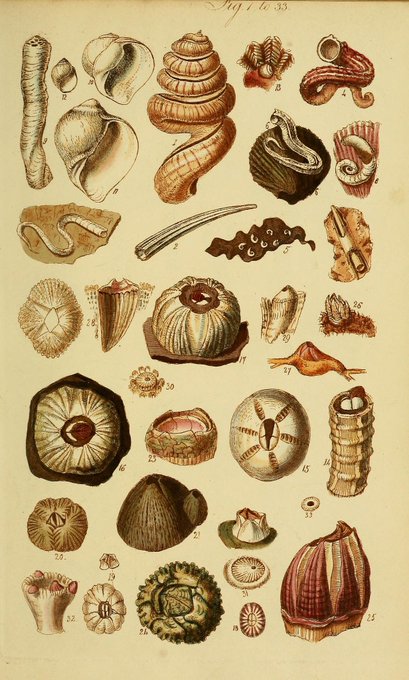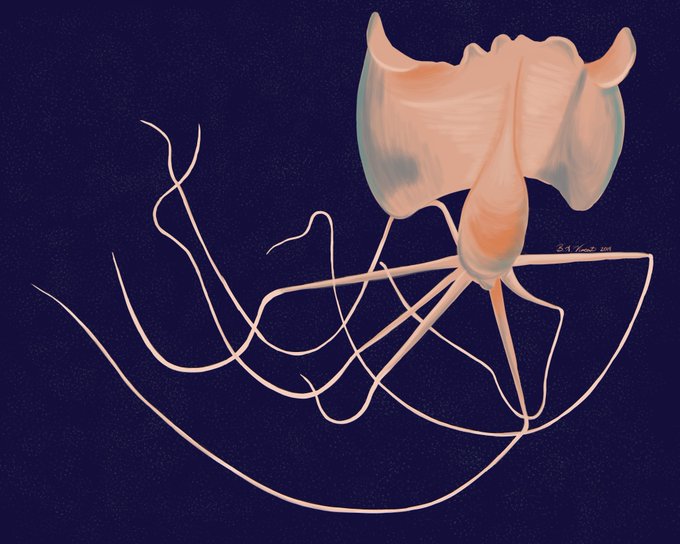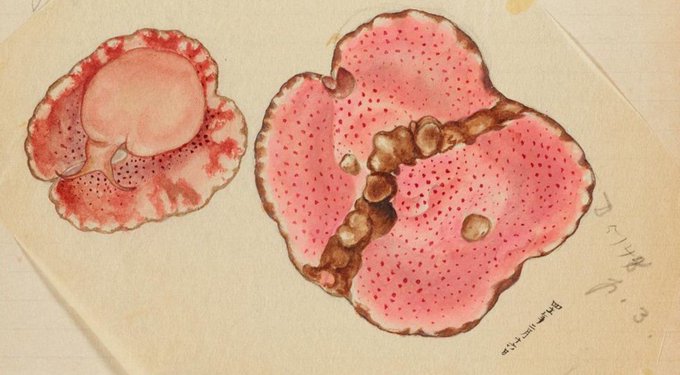MolluskMondayのTwitterイラスト検索結果。 31 件
Little snail guy!
🐌💗
#MolluskMonday
https://t.co/cIgIBeWVwk
At least he's being brave about it??
🐌😟💚🧡
#MolluskMonday #snail #gastropod #MolluscMonday #snails #gastropods #DigitalArt #HomelessArtist #TransArtist #MutualAidRequest #DisabledArtist
https://t.co/cIgIBeWVwk
Some Illex squid be chillin at 984m on Tortugas Scarp #okeanos #molluscmonday #molluskmonday
🐙🦑🐌🐚For #MolluscMonday, check out these cool #cephalopod illustrations. —Download them + many more illustrations of octopi, squid + cuttlefish species (+ other plants + animal illustrations!) here: https://t.co/D6jWPB8hgo via @BioDivLibrary #ArtScience #BioArt #MolluskMonday
#18January #January18 #18Gennaio #1月18日 2021
Argonauta argo (Linnaeus, 1758)
vern. Paper nautilus, Argonauta
pics 1, 2, 3 via sciencefriday, 4 via otchegopomogaet
#argonauta #mollusks #molluscs #molluskmonday #molluscmonday #marinemonday #sealife #scuba #biodiversity #nature
Ladies & gentlemen...🥁🥁🥁the terrifying “Dentatus septempod”!🐙#illustration #curiouserandcuriouser #MolluskMonday #CreaturesOfTheDeep
English naturalist William Turton's passion was conchology. He published several illustrated #shell books, including "A Conchological Dictionary of the British Islands" (1819). The work is free online thanks to @museumsvictoria @bhl_au ➡️ https://t.co/DHC4PvADww
#MolluskMonday
@BioDivLibrary @GNSIorg @Colossal @iamscicomm @furtherfield 🐙Happy #MolluscMonday! —Download these cool #cephalopod illustrations and many more illustrations of octopi, squid, and cuttlefish species (and other plants and animals) via @BioDivLibrary. —https://t.co/D6jWPB8hgo #ArtScience #BioArt 🦑🐙 #MolluskMonday
A multitude of mollusks collected during the voyage of the H.M.S. Samarang, which surveyed the coasts of Southeast Asia & southern China from 1843 to 1846. View more in "Zoology of the voyage of H.M.S. Samarang" (1850) via @SILibraries ➡️ https://t.co/9iKOaiKfWE #MolluskMonday
Three generations of Sowerbys contributed to "Thesaurus conchyliorum" (1847-87), one of the rarest of all conchology books. It includes over 500 hand-colored engraved or lithographed plates. Find it in #BHLib via @SILibraries ➡️ https://t.co/0j9WH3CQff #MolluskMonday 🐚
Beautiful #shells from "D'Amboinsche Rariteitkamer" for #MolluskMonday! This 1705 work by Rumpf details the marine life of Amboina (Ambon) in what is now eastern Indonesia & features #SciArt by Maria Sybilla Merian. In #BHLib via @museumsvictoria @bhl_au: https://t.co/iB5ie7ZIIv
Ram's horn squid comin' in hot this #MolluskMonday! This cute little weirdo has a coiled internal shell (like a ram's horn) that is used to control buoyancy AND has a photophore between its fins.
Spirula spirula
#SciComm #SciArt
Redbubble: https://t.co/um3WC3tBJ6
The Dana octopus squid is an 8-armed squid whose tentacles are reduced or disappear by the time they reach adulthood. Also, those lidded photophores are the largest known light-producing organs found in any animal.
Taningia danae
#MolluskMonday #SciArt #SciComm
@shanniesci @AcademicChatter This thread is awesome! I'm starting my PhD in the fall but I started using art for SciComm about a year ago by making a new drawing every week for #MolluskMonday. I also tap dance here and there and occasionally make a crazy cake.
(Butterfly is WIP)
In the 18th & 19th centuries, shell collecting was a popular pastime. Many beautifully-illustrated conchology publications were produced, such as "A Conchological Manual" (1839). Explore a 1st edition in #BHLib via @mayrlibrary ➡️ https://t.co/DcdeFPzmQT #MolluskMonday 🐚🐚
Happy #MolluskMonday! Shell-ebrate with beautiful shell #SciArt from the 1872 and 1880 volumes of the "Proceedings of the Zoological Society of London". Explore this title in #BHLib thanks to @NHM_Library @NHM_London ➡️ https://t.co/7GPigU17e1 🐚🐚🐚
The Bigfin squids are an elusive group of cephs that are rarely seen, especially as adults. It's easy to identify them when we do find them because their fins can be up to 90% of the mantle length!
family Magnapinna
#MolluskMonday #SciComm #SciArt
This past Monday marked the 10th #MolluskMonday drawing I've done since starting this habit. Thanks to all for your support and encouragement—so far it's been a blast and I'm excited to see what happens with the next ten!
https://t.co/RRcG7MDqWP
#sciart #illustration
Nudibranchs come in striking colors & forms, as seen through Tokyo-based artist Kumataro Ito's #SciArt documenting specimens collected on the Philippine Expedition, captured in Paul Bartsch's field book available via @SmithsonianArch ➡️ https://t.co/CPGGoY5ur7 #MolluskMonday




























































